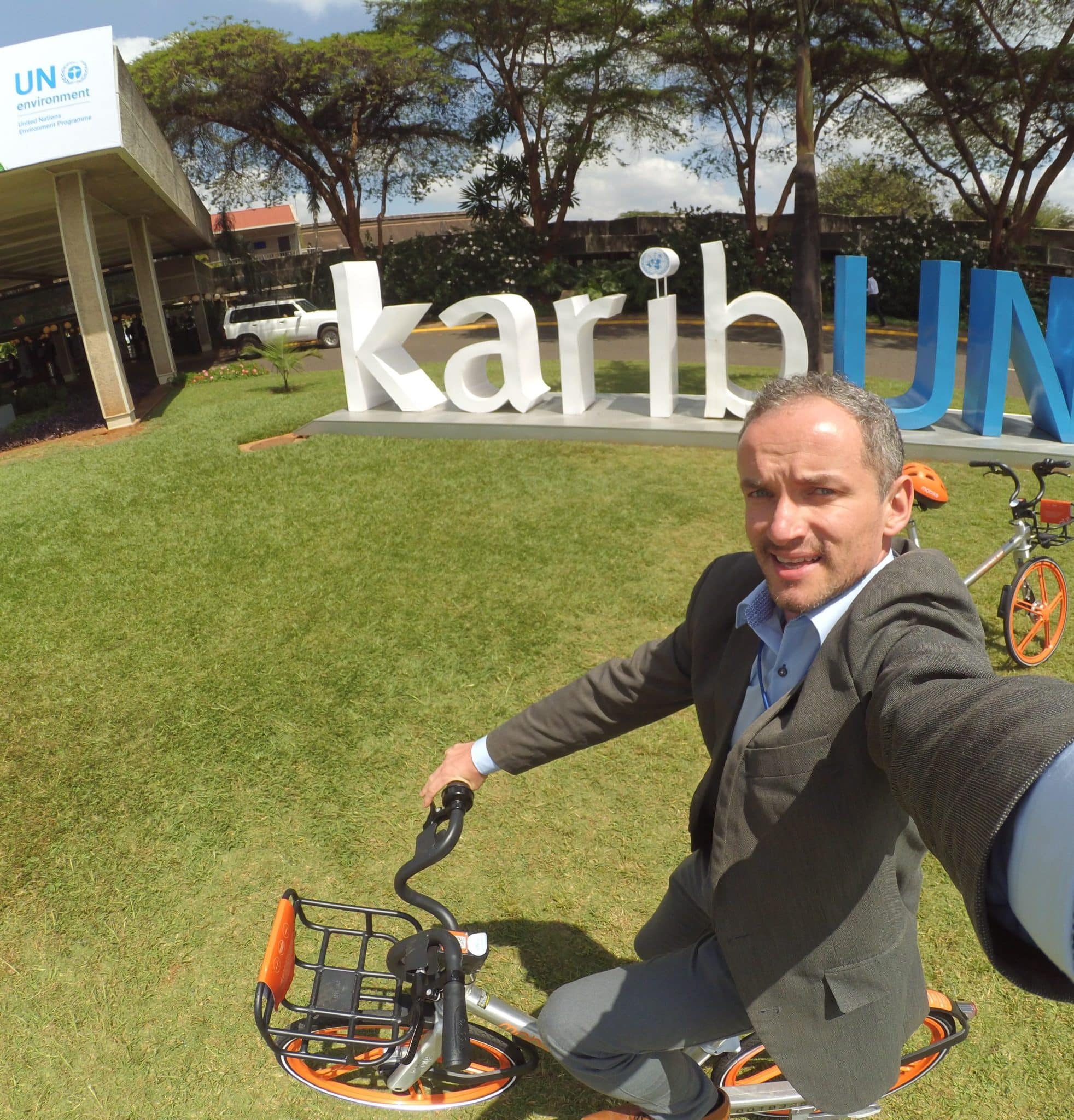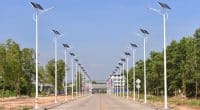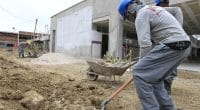The World Circular Economy Forum (WCEF) opened yesterday, 15 April 2024, in Brussels, Belgium. Over four days in the European capital, the event brings together players from all sectors of the economy, representatives of municipalities and political decision-makers from around the world. Among the leading participants is Piotr Barczak. In this interview with Afrik21, the Programme Director at the foundation of the African Circular Economy Network (ACEN Foundation) explains how and why the mobility and housing sectors - often less discussed than sanitation - are so essential to the success of the transition to a circular economy, particularly in Africa.
Benoit-Ivan Wansi : After Kigali in 2022, the World Circular Economy Forum (WCEF) takes place from April 15 to 18 in Brussels, Belgium. Do you have any specific expectations for this edition?
Piotr Barczak : This edition of WCEF is particularly special to me because it’s taking place in my beloved hometown. My sincere wish is for all participants to fully enjoy Brussels’ vibrant culture and innovative sustainability initiatives. These initiatives not only encourage the sharing of inspiring insights on the circular economy but also foster collaboration among attendees from around the globe.
One specific hope I’d like to highlight is the active involvement of representatives from the Global South in driving the circular economy on a global scale. Representatives from Africa, Asia, South America, and other regions will convene at a Roundtable organized by International Council for the Circular Economy – ICCE (of which he is an advisory member, Editor’s note) titled ‘From Aspiration to Action: Accelerating Circular Transition Worldwide.’ During this session, we aim to propose the establishment of a Global Centre on Circular Economy, with India as the host country and support from other Global South Partners. This initiative is crucial to ensure that the transition to a circular economy isn’t imposed on us from external forces but rather driven by our own leadership and mutual inspiration.”
There are a growing number of organizations dedicated to promoting the circular economy. What is special about the ACEN Foundation?
The ACEN Foundation includes the word ‘network’ in its name, reflecting its bedrock – a network of circular economy experts dispersed across nearly every country in Africa. This ensures a deep understanding of the diverse local circumstances present throughout the continent, including political, geographical, economic, social, and technical factors such as material flows, available infrastructure, data, and enabling policy environments.
No other organization in the field of circular economy boasts such extensive coverage and penetration on the African continent. Our aim goes beyond mere promotion; we focus on implementing tangible actions. We collaborate with selected countries to develop Circular Economy Roadmaps at the governmental level, and we engage with entrepreneurs and cities to enable biowaste treatment technology using black soldier flies.
Our team is diverse, yet united by a shared goal: advancing the principles of a circular economy.
When we talk about the circular economy, we immediately think of waste management, especially recycling, forgetting that it’s a whole process that takes place right from the design, supply and use of products. Could you remind us of the conventional processes involved?
Indeed, the circular economy is much more than waste management and recycling. When explaining its principles to governments and businesses, I prefer to emphasize how the circular loops should be planned rather than simply comparing them to the linear economy we’re familiar with. So, I invite you to visualize these circular processes… Products and materials flow through loops, being produced, used, reused, disposed of, and then reintegrated into production. However, this vision is simplistic. The real trick of the circular economy lies in designing products and systems so that these loops (visualize them again) are slow, extending the lifetimes of products and ensuring durability by design. These loops are lean, carrying only as many resources as necessary, with any excess consumption avoided. You can’t bend the massive flow of materials; you must reduce it. This is where sufficiency policies come into play, especially crucial in the Global North. Thirdly, these loops are local, benefiting local communities; waste is generated and reintegrated into the territorial hierarchy, with no waste being traded over long distances. Fourth, materials in these loops are clean and non-toxic. There’s no place for toxic substances in the circular economy, as they harm humans, the environment, and the recycling process itself by contaminating streams and damaging its reputation. Fifth, the materials and energy used to sustain these loops come from sustainable and renewable sources. Sixth, and most importantly, these loops are regenerative, capable of improving current circumstances and systems, contributing to the overall well-being of society and aiming for a future where people and the planet thrive together.
In addition to sanitation, the circular economy is gradually making inroads in a number of sectors, such as housing, through the integration of energy efficiency systems and the use of recycled materials and local resources. How do you view this model, which is tending to disrupt traditional architecture? What concrete contribution can it make to African cities faced with housing problems?
Did you know that the Pritzker Architecture Award, the most prestigious in the field, has highlighted Africa as home to some of the world’s best architecture? However, this recognition does not refer to the cement structures mimicking Western architecture but rather to traditional structures constructed from local materials such as clay, straw, wood, and stone.
Circularity in the built environment holds immense potential impact in Africa, particularly concerning climate considerations compared to energy-intensive conventional architecture. Deconstruction, as opposed to demolition, enables the preservation of components and materials suitable for reuse. Yet, the focus isn’t solely on materials; the built environment also relies on smart modular approaches. Structures should be designed for reuse and repurposing, rather than demolition. Urban planning plays a crucial role by intelligently distributing space, reducing distances, and fostering flexibility for city dwellers to engage in circular activities. As Africa continues to develop its infrastructure, adhering to these principles becomes paramount.
Then there’s mobility. The expansion of the electric vehicle market, seen as an essential step towards decarbonizing transport, is beginning to pose another problem. Indeed, the manufacture of electric batteries is considered polluting because of the extraction and transport of minerals (cobalt, lithium). Given this situation, what principle of the circular economy should carmakers and drivers prioritize? Battery reuse and recycling?
The automotive sector is known for its high resource consumption. Returning to the principles of circular economy mentioned earlier, the second rule emphasizes lean circles, which are particularly applicable to the automotive industry. Sufficiency measures can be effectively applied by reducing the size of cars, and by designing cities to reduce the reliance on private cars. Many sustainability-focused cities have seen success in reducing the number of cars on the roads, promoting the use of light mobility options, scaling public transport and mobility as a service. Electrification is important. While I strongly advocate for electrifying everything that can be electrified, it’s essential for producers and users of cars to adhere to rigorous standards, enforced by government policies, regarding the materials’ sourcing impacts. Additionally, in the design stage, durability of batteries and chassis must be ensured. Batteries should not only be recyclable but also repairable, with options for regenerating damaged cells to improve longevity. Recently, the European Union adopted the new Battery Regulation, a groundbreaking set of rules aimed at ensuring circularity, recycled content, and recycling rates for critical raw materials in batteries. As someone involved in this process on behalf of the European Environmental Bureau, I encourage everyone to explore this innovative regulation, which introduces tools like the Digital Product Passport to enhance circularity throughout the battery’s value chain
How can new technologies contribute to the transition to a circular economy?
When it comes to technologies that contribute to both the circular economy and climate change mitigation, I highly recommend checking out the Green Technology Book by World Intellectual Property Organization (WIPO) and Climate Technology Center and Network (CTCN), which was published at COP28. I had the pleasure of contributing to it. The book covers around 200 technologies, ranging from those ready to be scaled up to frontier technologies and those still on the horizon. Among my favorites are those addressing organic waste streams, such as black soldier flies. These not only help manage waste but also produce proteins for animal consumption, solid improvers for agriculture, and potentially energy through anaerobic digestion of frass. Other useful technologies highlighted include methods for treating water hyacinths, utilizing cassava starch and banana residues for packaging. As mentioned earlier, the digital product passport is poised to be a game-changer in terms of traceability of materials, ownership, and producer responsibility, significantly enhancing the circularity of products covered by this digital passport.
However, I must emphasize that while technology plays a significant role in enabling a circular economy, it’s crucial not to rely solely on it to solve the challenges of transitioning to a circular economy. Equally important is addressing consumption patterns and reducing overall material throughput.
Since you mention consumption patterns, we note that many municipalities on the continent are faced with mass production and consumption. But most still don’t have a circular economy plan that would also enable them to respond effectively to the phenomena of informal housing and endless traffic jams. What strategy for financing and monetizing the circular economy would you put in place if you were head of a cosmopolitan African city of your choice (Cairo, Kinshasa, Johannesburg or Nairobi)? Climate Technology Centre and Network (CTCN)
Large cities are hubs of people, capital, skills, ideas, and resources, but they also face challenges related to material flows and chaos, which can erode trust among stakeholders. These challenges hinder the development of a true circular economy, which should ensure that nothing and no one is disposable. However, solutions exist. Cities have control over their fiscal regimes. For instance, if I were the head of Kinshasa, I would offer tax incentives, rebates, and subsidies to businesses adopting circular practices. Additionally, as the head of Cairo, I would implement circular procurement policies to prioritize goods and services that adhere to circular principles. This would create demand for circular products and stimulate market growth. Furthermore, focusing on waste streams, I would strengthen and enforce extended producer responsibility (EPR) rules, partially implemented in Johannesburg. This would ensure that waste collection and treatment costs are fully covered. Moreover, I would introduce an additional fee modulation and ‘Fund for Change’ within the EPR fee. This separate budget would support circular solutions. By implementing these strategies, all African cities can unlock the economic, environmental, and social benefits of the circular economy while promoting sustainable development and resilience in the face of global challenges.
Interview by Benoit-Ivan Wansi







